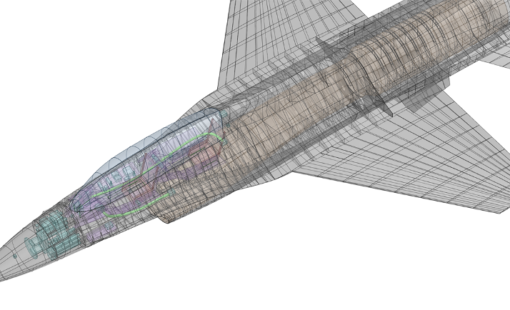We have examined systems development in great detail over the last few months. We introduced variations of the digital engineering approach and discussed how each one could aid the development process. For example, systems simulation can power digital engineering and how the digital thread brings traceability to the design of E/E systems. We also introduced the concept of engineering co-design.
Now it’s time to talk about systems development’s full potential value, which only results from a comprehensive digital engineering approach that combines all the aspects mentioned above. In this post, we investigate the intersection between each of these topics.
Requirements Management and Architecture Validation
In today’s digital engineering environment, requirements traceability is crucial. This is because products are getting more complex, and the market is demanding increasingly intricate systems. The result is more requirements in play across a standard systems development life cycle.
One of the benefits of using a model versus documents to define your product is that the requirements, components, functions, etc. are built upon relationships. These relationships can generate diagrams to help visualize and track design intent. Changes to the relationships in the model automatically update the diagrams to reflect the change.
With so many requirements, it is vital to track and manage each one. In doing so, we create a robust change history. Additionally, it is important that multiple engineers can collaborate on requirements that span domains.
When designing a product, systems engineers build out functional requirements and allocate them to a development architecture of components and interfaces. Then they pass it to the detailed design engineers. From there, the detailed design engineers construct a product or subsystem and verify the feasibility of the design, checking that the design satisfies those requirements.
Requirements management allows systems engineers to validate a proposed architecture from the bottom up. This check ensures that the architecture works before the detailed design engineers invest their time and energy into a load of detailed design work.
To achieve this, manufacturers need a single source of truth across the design phase. Then, systems engineers and detailed design engineers can work from the same set of requirements.
Using a Common Digital Thread for Cross-Domain Co-Design
Co-design across engineering domains is now more vital than ever. Why? Because today’s smart products integrate software and electronics in almost every subsystem. Engineers must now work across multiple disciplines. They must also work together, especially when dealing with requirement and specification trade-offs across subsystems. A common model-based systems engineering (MBSE) model can be the definition that every discipline can use for these negotiations.
A digital thread is also critical. This digital thread must work across all domains, especially for electronics and electrical systems. With a digital thread, engineers working across any domain can track and manage changes. They can define how different artifacts are related over time. These relationships create an audit trail that anyone can reference to understand why and how past decisions came about. Furthermore, anyone can check the digital thread to ascertain the most current state of the system’s development.
The intersection of these two concepts is powerful. An MBSE model acts as an unambiguous definition of the system. The digital thread acts as a historical trail of detailed designs, revealing how they mature over time. These two artifacts are interconnected. As the MBSE model matures, its connections with the digital thread grow for each domain.
System Simulations and Requirements Traceability
Each phase of the development process uses system simulations. These simulations mature from one phase to another, enabling systems engineers to explore architectures and make informed design decisions. These simulations allow detailed design engineers to verify the feasibility of requirements early on in the development lifecycle. During the detailed design phase, simulation also lets a manufacturer verify performance across different design domains.
To understand whether your design is successful, you need to know what targets are required. This is where the requirements come into play. More specifically, the traceability of the requirements is key. A single source of truth, connected to specific elements of the subsystem or design, can help. Then those system simulations can link the right components to the right outcomes. This closes the loop between the system requirements and its behaviors.
The Digital Engineering Approach–Summing it Up
In this post, we have explained several aspects of the digital engineering approach:
- Requirements management and architecture validation must go hand in hand. Together, they allow detailed design engineers and systems engineers to collaborate and work from the same set of requirements.
- Using a common digital thread allows for cross-domain co-design. This concept is vital for today’s increasingly complex products, where a digital thread and interconnected MBSE model can grow as the product design grows.
- System simulations can measure the success of a design decision, but only when using the right requirements. This is why requirements traceability is key. A single source of truth can aid this process, closing the gap between system requirements and behaviors.
—–
For more information about systems engineering, digital engineering, and MBSE, visit our website or download our Digital Engineering eBook.
Related Products and Resources

- Blog

- 2020 Technical Webinars
This webinar will explore the Digital Thread within the Digital Engineering process. The Digital Thread is the communication foundation underlying the collaboration and decision-making processes. With a focus on electrical and electronic design processes, this webinar will consider how the Digital Thread can support an MBSE based design process including design review and requirement verification.

- Webinar
This webinar will discuss the relationship between systems engineering, digital engineering, and MBSE in creating the framework we need to deliver complex products.

- White Paper
This eBook describes an MBSE based process for Electrical and Electronic design. The eBook begins with model content and structure with the purpose of implementation and the need for a “design envelope”.





